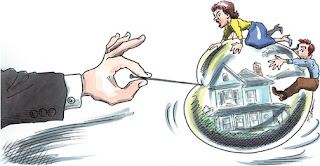The Scots lion was on its knees, wounded but still breathing. Who was to blame? How did RBS find itself at the centre of the financial crisis.
Sir Fred now found himself back to plain old Mr. Goodwin, the removal of his Knighthood has led many to heap all the blame on the unfortunate Mr. Goodwin. But Mr. Goodwin may have been the leading man in the RBS tragedy but there were many supporting actors. The Financial Services Authority played no small part in this tragedy. Section 2 of the Financial Services and Markets Act 2000 (FMSA) outlined the regulatory objectives of the FSA as being:
• “Market Confidence
• Financial Stability
• Consumer Protection
• The reduction of financial crime”
The report on the failure of RBS was released in December 2011 and concluded that among the contributing factors were the poor decisions made by RBS management including the ill-fated ABN Amro acquisition, their weak capital levels as well as their over dependence on short- term funding. However the failure of FSA as a regulatory body is also acknowledged as Alan Turner, FSA chairman refers to how “the Report concludes that the FSA was too focused on conduct regulation at the time and its prudential supervision of major banks was inadequate.”
Lord Turner of the FSA : Regulation was simply wrong.
A toxic mix was present in the form of poor management, poor regulation and poor decision making added to the mix was the fact that the required capital and liquidity levels that banks had to hold was also proven to be starkly insufficient. With Basel III proposed as the solution to this issue and a new approach to regulation surely avoiding such a failure will be an aim galvanising regulators and bank management alike.
This is surely is the only hope for the future. But we must remember that our Scots lion didn’t roam the world alone and was accompanied by other hunters, hunters which some view as even more dangerous; the lions of politics. The bank world operates within society, and is just as subject to political machinations as the rest of society. Mr. Brown, Blair, Balls and Darling and their belief in light-regulation and their ham-stringing of the FSA played no small part in the fall of the Scots giant. The fall of RBS was not just a financial tragedy but also a political scandal.

.jpg)



